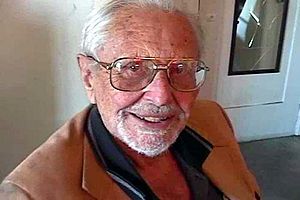Kurt Lehovec facts for kids
Quick facts for kids
Kurt Lehovec
|
|
|---|---|
 |
|
| Born | 12 June 1918 Ledvice, Bohemia
|
| Died | 17 February 2012 (aged 93) California, USA
|
Kurt Lehovec was a brilliant scientist and a pioneer in creating tiny electronic parts. He helped develop the first integrated circuits, which are like tiny brains inside almost all modern electronic devices. He also worked on solar cells, light-emitting diodes (LEDs), and lithium batteries.
One of his most important ideas was a special way to protect parts of an integrated circuit. This method is called "p-n junction isolation" and uses a "guard ring." It's like building a tiny fence around each electronic part to keep it separate and working correctly. This invention was so important that it's used in nearly every circuit today! Because he was working for a company called Sprague, he was paid only one dollar for this amazing invention.
Lehovec also discovered something called "fast ion conductivity." This is a way that tiny charged particles, called ions, can move very quickly through certain materials.
Contents
Who Was Kurt Lehovec?
Kurt Lehovec was born on June 12, 1918, in a place called Ledvice. This town was in Bohemia, which is now part of the Czech Republic. He studied there and later moved to the United States in 1947.
His move to the US was part of a special program called Operation Paperclip. This program helped scientists and engineers come to the United States after World War II.
Discovering Light-Emitting Diodes
Kurt Lehovec was one of the scientists who helped explain how light-emitting diodes (LEDs) work. He worked with two other scientists, Carl Accardo and Edward Jamgochian. They built on earlier work by a scientist named Oleg Losev. LEDs are now used everywhere, from your phone screen to traffic lights.
The "Lehovec Effect" and Batteries
Lehovec also made a big discovery about how ions move in certain materials. This is called "fast ion conductivity." He predicted that ions could move very quickly in a thin layer on the surface of ionic crystals. This thin layer is super tiny, only a few nanometers thick!
This idea, sometimes called the "Lehovec effect," is very important for modern technology. It helps us create new materials for fast ion conductors. These materials are used in many things, including the lithium batteries that power your cell phone and laptop. They are also used in fuel cells, which are devices that create electricity.
Later Life and Legacy
Kurt Lehovec became a Professor Emeritus at the University of Southern California in Los Angeles. After he retired from teaching, he started writing poetry. He lived in Southern California until he passed away in 2012 at the age of 93. His work helped shape the world of electronics and batteries as we know it today.

